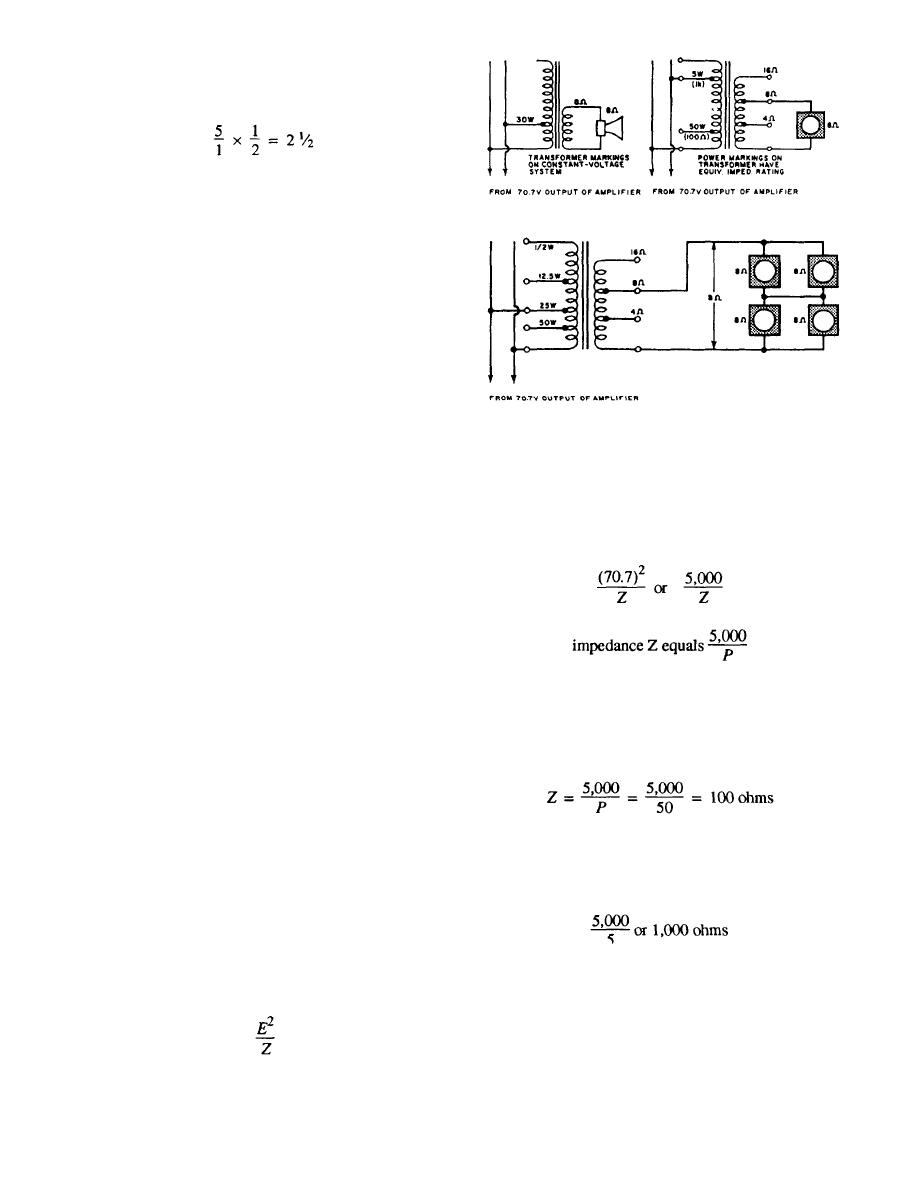 |
|||
|
|
|||
| ||||||||||
|
|
 The situation is not quite so upsetting in the series
connection where the 8-ohm speaker accepts only
one-half the power of the 16-ohm speaker. The power
efficiency/power input ratio now becomes
Taking only one-half the input power of the 16-ohm
speaker, the 8-ohm speaker is producing 2 1/2 times as
much acoustic power.
CONSTANT VOLTAGE SYSTEMS
With the constant-voltage distribution system, you
can distribute audio power without having to match
impedances or be too concerned about the effect of
changes or additions on one part of the distribution
system.
Assuming that the line voltage from the amplifier is
Figure 4-19.-Network mesh systems may be employed with the
constant, you can make easy, on-the-spot level
constant-voltage system where speaker group may be
adjustments of an individual speaker to suit the needs of
considered single load.
the particular area served by that speaker on the line. In
addition, you conserve audio power.
In a 70.7-volt system, power delivered is
There are disadvantages to the system, too. Though
wire runs are economical, each speaker or group of
speakers requires its own line tie-in transformer and the
main amplifier requires one master transformer.
In a matched-impedance system, the impedance
must be calculated on each speaker group. Various
speaker configurations will be necessary to get a usable
impedance for any one branch. In a constant-voltage
Problem: You have a transformer whose 8-ohm
system, such as the 70.7-volt system (fig. 4-19), these
secondary is connected to an 8-ohm speaker. What
values are precalculated by the manufacturer of the
should be the impedance of the primary to deliver 50
amplifiers and transformer. The line-matching
watts to the speaker from a 70.7-volt line?
transformer has taps on the primary, marked in units of
Solution:
power (watts), that will be delivered from the 70.7-volt
line when the secondary is connected to a 4-, 8-, or
16-ohm speaker (fig. 4-19).
The precalculated values for the transformer will
If you wanted to draw 5 watts from the 70.7-volt
hold if the input voltage of the transformer is maintained
line, the impedance of the transformer primary must be
at 70.7 volts. The amplifier gain control should be set at
the point where the loaded amplifier delivers 70.7 volts
RMS across the line at maximum load.
Though you need not do the calculating for
impedance, it is easy to do. By formula, power P across
an impedance equals the square of the voltage divided
The individual constant-voltage transformer at each
by the impedance; that is
speaker makes it possible to quickly adjust the power
into the speaker for a given sound coverage. Also, where
there is a mix of cone speakers and horn speakers, you
4-18
|
|
Privacy Statement - Press Release - Copyright Information. - Contact Us |